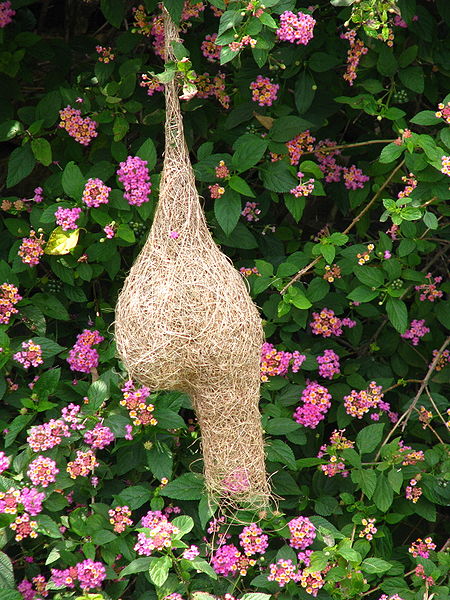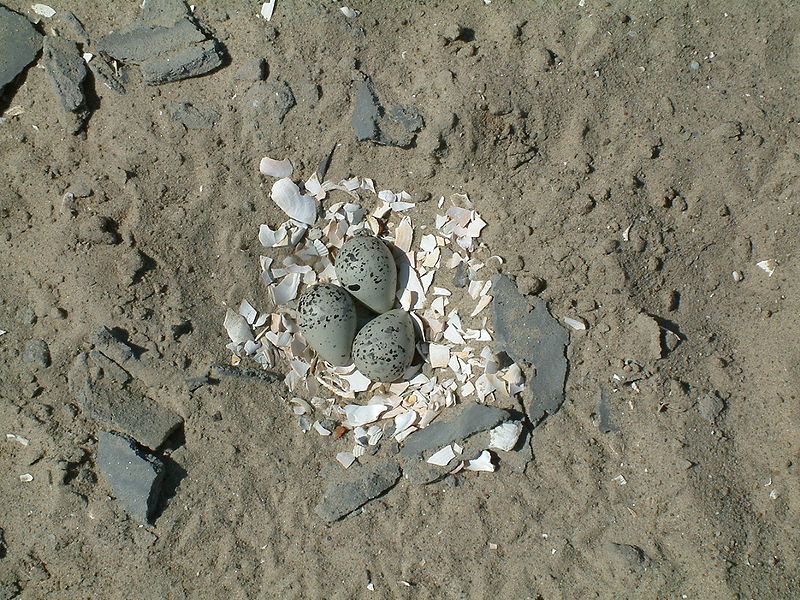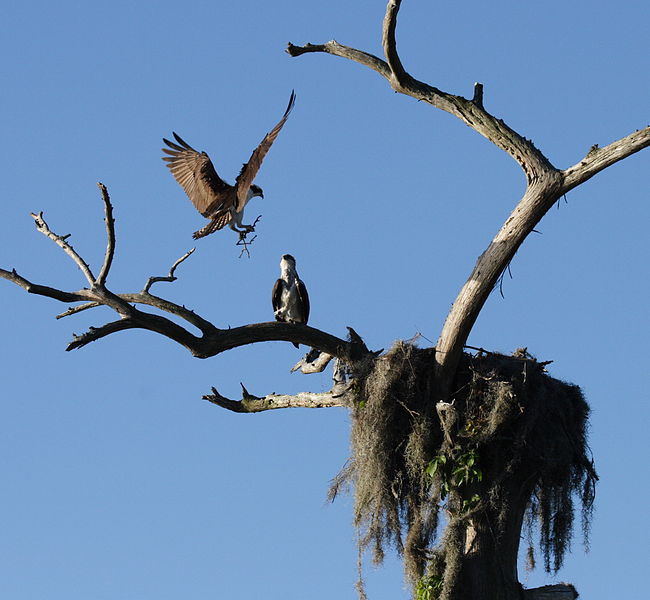Dogs



- The Most Beautiful And Spectacular Nests In The World
Nests are important to many birds and other animals to keep their eggs and to provide a place to live or raise offspring. Nests are usually made of some organic material like, grass, leaves, twigs or simply a depression in the ground, or a hole in a...
- Unique Methods Of Building And Construction In The Animal World
Some species of animals have unique methods of creating their homes or in building their nest. What are the materials they used? Let’s find out who are the greatest carpenters and engineers in the animal world. If Termites were like humans, a single...
- Bizarre Nesting And Egg Laying Behavior Of Animals
Here are some peculiar egg-laying and nesting behaviors of some bird species. Potoos Image Source Potoos are unique birds that lay their single egg directly atop a broken stump. They also lay their egg directly into a shallow depression on a branch...
- Names Of Animal Nests
What do you call the different nest of animals? The nest of a Badger is called a “Sett”. Image Source A Sett is a Badger’s den that usually consists of a network of tunnels that can accommodate 15 or more animals, with up to 300 meters of tunnels...
- Sun Bear Facts And Information
The Sun Bear is the smallest of the bear family and lives in the forest of Southeast Asia. They only weigh 150 pounds in the Wild. Sun Bears are a mammal species and they can live up to 25 years in the wild. They are only 4-5 feet long and weigh 60-150...
Dogs
Amazingly Interesting Facts About Peculiar Birds’ Nests
Almost all birds build their own nest. A few don’t build any at all while scores will utilize abandoned nests, burrows or cavities on trees. Some birds are bizarre in creating their nest. Here are some of them.
1.) Cave Swiftlets’ nests are made of their saliva. These saliva nests of Cave Swiftlets are used to make “Bird’s nest soup” in parts of Southeast Asia. Bird’s nest soup is one of the most expensive food in the world and is regarded as an exotic aphrodisiac.
2.) The Horned Coot’s type of nest is called a mound. The base of the enormous nest they built is made of stones which they gathered using only their beaks.
3.) These stones, which are up to 450 g each are dropped into the shallow water of a lake, making a cone-shaped pile which can measure as much as 4 m2 at the bottom and 1 m2 at the top, and 0.6 m in height.
4.) The total combined weight of the mound's stones built by Horned Coots is about 1.5 tons or 1,400 kg. A sizable platform of aquatic vegetation is constructed on top of the mound.
5.) Egyptian Plovers and Three-banded Coursers are distinct in their habit of partially burying their eggs in the sand of their scrapes – the simplest type of nest.

Image Source
6.) Woodpeckers are among the strongest creatures in relation to their beaks. They use their chisel-like bills to excavate their cavity nests, a process which takes, on average, about two weeks.
7.) The Red-cockaded Woodpecker, an endangered species, takes up to two years to excavate its nest cavity but can reuse it for more than two decades.
8.) Red-cockaded Woodpeckers peel bark around the entrance, and drill wells above and below the hole; since they nest in live trees, the resulting flow of resin forms a barrier that prevents snakes from reaching the nests.
9.) The Red-breasted Nuthatches smear sap around the entrance holes to their nests for protection from predators.
10.) For protection from predators, the White-breasted Nuthatches rub foul-smelling insects around their nests.
11.) Eurasian Nuthatches have a unique way of protecting their nests. They wall up part of their entrance holes with mud, decreasing the size and sometimes extending the tunnel part of the chamber.
12.) Most female Hornbills seal themselves into their cavity nests, using a combination of mud, food remains and their own droppings to reduce the entrance hole to a narrow slit.
13.) Grebes, an aquatic species, are very careful when approaching and leaving the nest so as not to reveal the location. Some species will use leaves to cover up the nest prior to leaving.
14.) The Australian Magpie, a popular Australian bird species, is noted for attacking persons that get near its nest.
15.) It was discovered that some birds choose aromatic green plant material for constructing nests that may have insecticidal properties, while others may use materials such as carnivore scat to repel smaller predators
Image Source
16.) The Malleefowl uses the sun to help warm its nest. The bird opens the mound at midday during the cool spring and autumn months to expose the plentiful sand incorporated into the nest to the sun's warming rays, then using that warm sand to insulate the eggs during the cold nights. During hot summer months, the Malleefowl opens its nest mound only in the cool early morning hours, allowing excess heat to escape before covering the mound again completely.
17.) Some birds use pieces of snake slough in their nests. It has been suggested that these may deter some nest predators such as squirrels
18.) Seabirds, Penguins, Flamingos, Herons, Gulls, Terns, Weavers and some Corvids and Sparrows gather together in sizeable colonies while most birds nest individually
19.) The nests of Burrowing Parakeets can extend for more than three meters or about 10 ft.
20.) Buff-breasted Paradise Kingfishers have a unique way of building their nests. They dig their nests into the compacted mud of active termite mounds, either on the ground or in trees.
21.) Some Crepuscular petrels and Prions are able to identify their own burrows within dense colonies by smell.
22.) Crab Plovers use burrow nest, the warmth of which allows it to leave the eggs unattended for as long as 58 hours
23.) D’Arnaud’s Barbets dig vertical tunnel shaft more than a meter deep, with its nest chamber excavated off to the side at some height above the shaft's bottom
24.) Puffbird is a ground-nesting species, prefers flat or gently sloping land, digging their entrance tunnels into the ground at an angle.
25.) Like Horned Coots, Flamingos type of nest is also called a mound. These lovely-looking birds make a different type of mound nest. Using their beaks to pull material towards them, they fashion a cone-shaped pile of mud up to 46 cm tall with a small depression in the top to house their single egg. The height of the nest and the circular, often water-filled trench which surrounds it help to protect the egg from fluctuating water levels and excessive heat at ground level.
Image Source
See also
- Amazingly Unique Nesting, Mating and Hatching Behaviors of Birds
- Interesting Things About Birds
- Amazing Facts About Owls
- Names of Animal Nest
- The Most Beautiful And Spectacular Nests In The World
Nests are important to many birds and other animals to keep their eggs and to provide a place to live or raise offspring. Nests are usually made of some organic material like, grass, leaves, twigs or simply a depression in the ground, or a hole in a...
- Unique Methods Of Building And Construction In The Animal World
Some species of animals have unique methods of creating their homes or in building their nest. What are the materials they used? Let’s find out who are the greatest carpenters and engineers in the animal world. If Termites were like humans, a single...
- Bizarre Nesting And Egg Laying Behavior Of Animals
Here are some peculiar egg-laying and nesting behaviors of some bird species. Potoos Image Source Potoos are unique birds that lay their single egg directly atop a broken stump. They also lay their egg directly into a shallow depression on a branch...
- Names Of Animal Nests
What do you call the different nest of animals? The nest of a Badger is called a “Sett”. Image Source A Sett is a Badger’s den that usually consists of a network of tunnels that can accommodate 15 or more animals, with up to 300 meters of tunnels...
- Sun Bear Facts And Information
The Sun Bear is the smallest of the bear family and lives in the forest of Southeast Asia. They only weigh 150 pounds in the Wild. Sun Bears are a mammal species and they can live up to 25 years in the wild. They are only 4-5 feet long and weigh 60-150...
